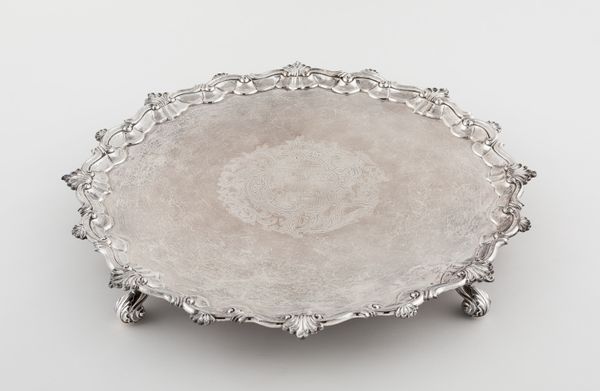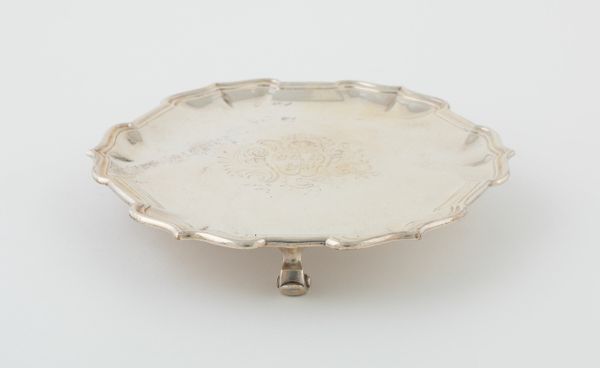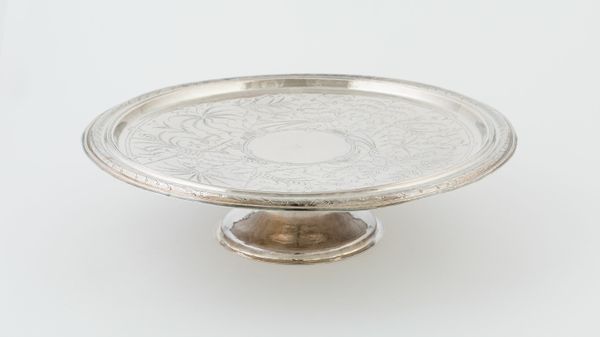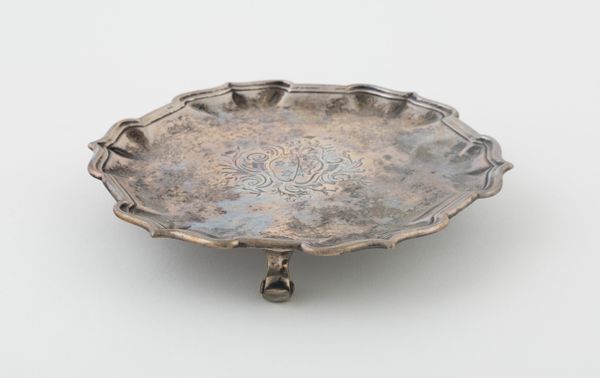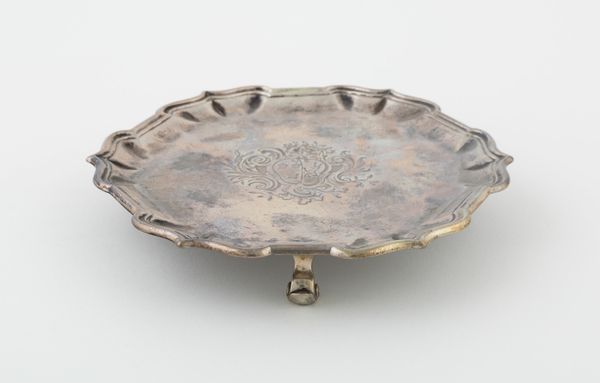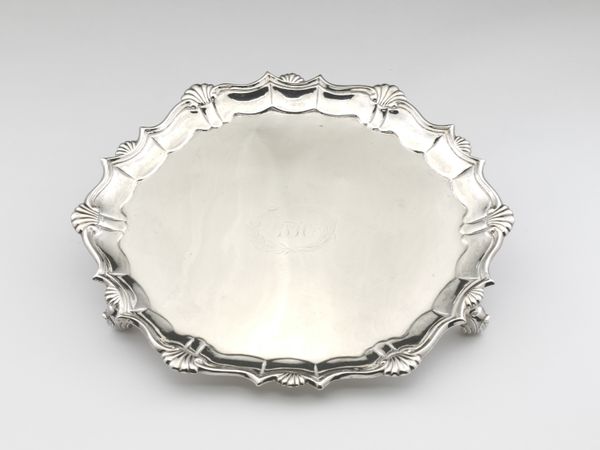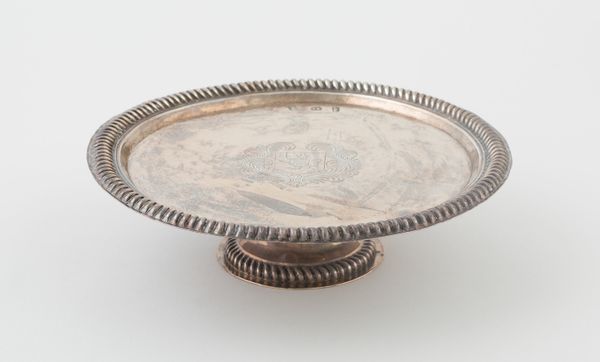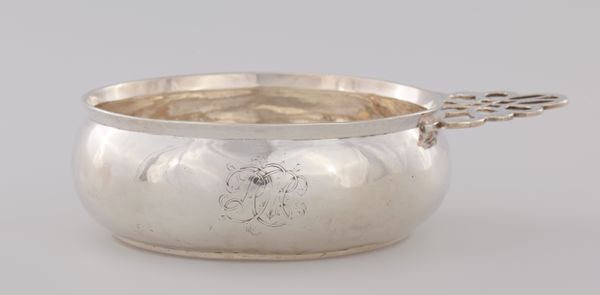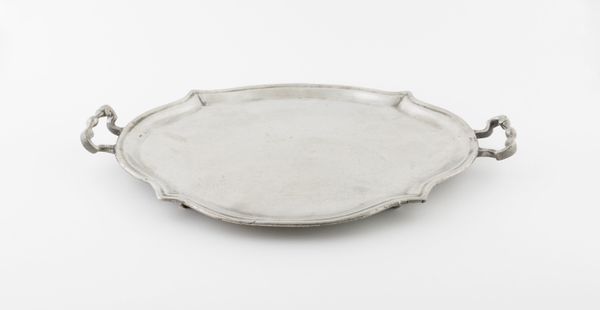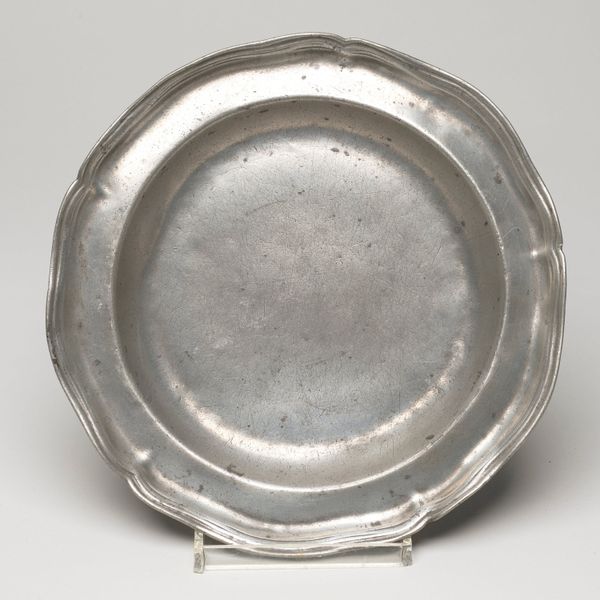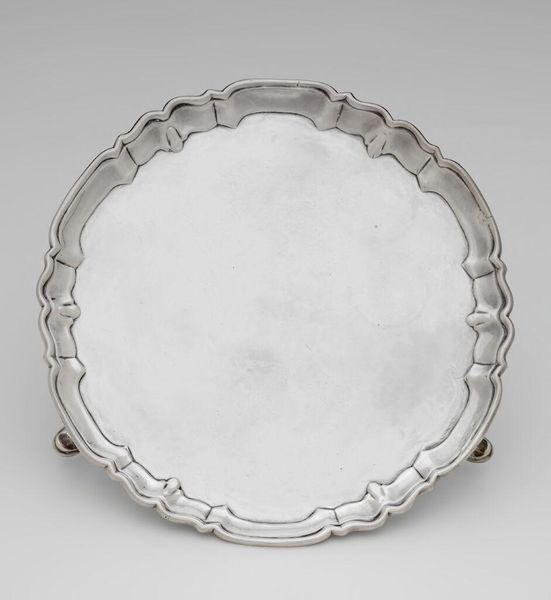
silver
#
silver
#
baroque
#
decorative-art
Dimensions: 6 × 53.3 cm (2 3/8 × 21 in.)
Copyright: Public Domain
Curator: It has a subdued elegance, almost like moonlight on water. I find its muted tone remarkably restful. Editor: We're currently observing a silver tray, crafted between 1731 and 1732 by John Tuite. It resides here at the Art Institute of Chicago. Curator: Its silvery surface, subtly etched with ornamentation, possesses a textural quality that I find immediately appealing. How does the baroque aesthetic reflected in it resonate with you from a historical vantage? Editor: The piece reflects the 18th century's infatuation with luxury goods among the affluent classes. It embodies the baroque penchant for ornate design. Silver items like this weren't mere functional pieces. They communicated the owner's wealth and their cultural capital within their societal circle. Curator: Indeed. And within its design we witness that communication rendered tangible. The scalloped edge, coupled with its delicate feet, establish a rhythmic cadence that is visually soothing. What can we infer from this emphasis on luxurious design? Editor: Well, the early 18th century was defined by courtly rituals, opulent displays of wealth and power and social hierarchy. The creation and consumption of such elaborate pieces reaffirmed this social hierarchy. These precious metal pieces were also essential components for negotiating diplomatic exchanges with foreign dignitaries. Curator: So the "Tray" fulfilled a representational function beyond its intrinsic value as a vessel? Editor: Undoubtedly. Serving and drinking habits became highly ritualized during that period, transforming simple gestures into social statements. Curator: I now consider this not just as a thing of beauty, but as a potent emblem of an era. Editor: Precisely. Viewing this silver "Tray" lets us see its interplay within the larger framework of artistic patronage, courtly aesthetics and economic forces shaping eighteenth-century culture. Curator: This has transformed my sense of it; no longer merely aesthetically pleasing but representative of an epoch! Editor: Quite right! Thank you for enriching our understanding by revealing aspects central to its formal vocabulary!
Comments
No comments
Be the first to comment and join the conversation on the ultimate creative platform.
